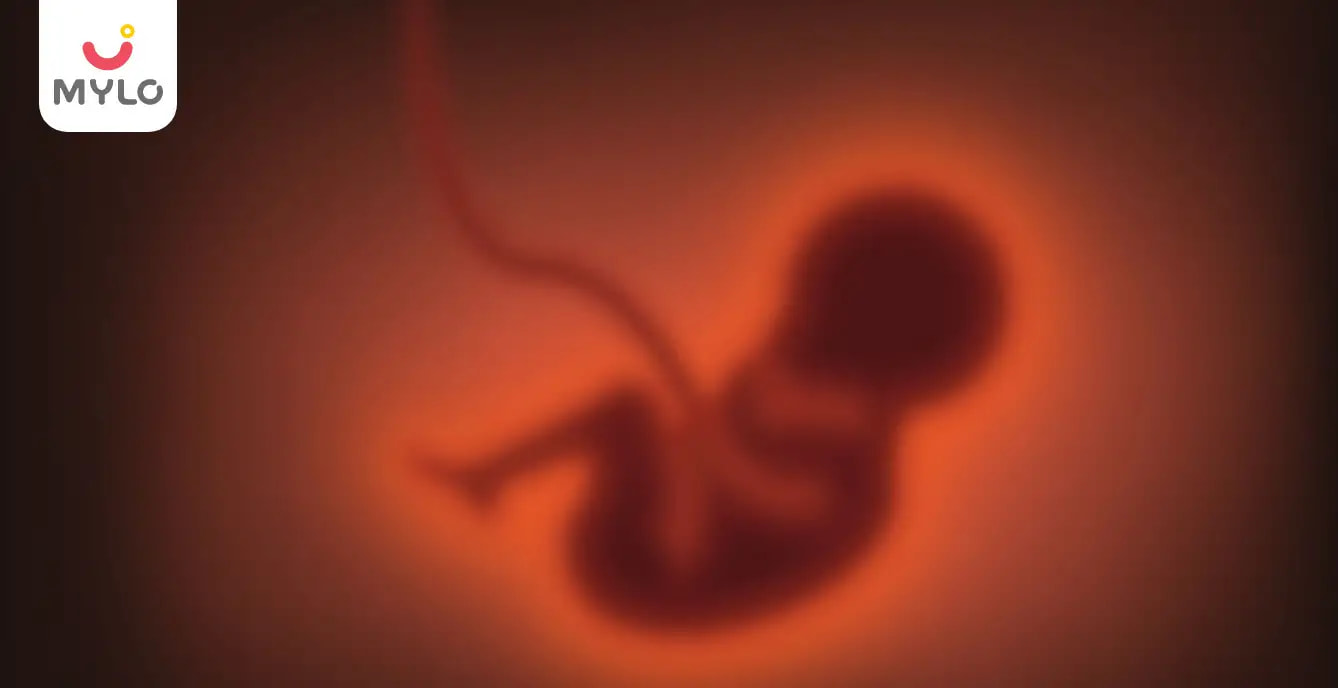Home

Miscarriage

Blighted Ovum: Causes, Symptoms & Treatment
In this Article

Miscarriage
Blighted Ovum: Causes, Symptoms & Treatment
Updated on 12 October 2023
A blighted ovum is when a fertilized egg implants in the uterus lining but does not grow into an embryo. This is also known as anembryonic pregnancy and results in a miscarriage during the first trimester of pregnancy.
In this article, we will understand in detail what a blighted ovum means, its symptoms, causes, treatment and most importantly if it can be prevented.
What is a blighted ovum?
A blighted ovum, also known as anembryonic pregnancy, is a type of early miscarriage caused when the fertilized egg implants into the uterus but does not grow into an embryo. The gestational sac (where the embryo usually develops) continues to grow but the embryo ceases to develop.
The placenta and empty gestational sac continue to release pregnancy hormones even though the embryo isn’t there anymore, resulting in early pregnancy symptoms. Some women may get a positive pregnancy test and later find out that they have miscarried and some may not even know they are pregnant.
Causes of blighted ovum
Certain chromosomal or genetic problems during cell division can lead to a blighted ovum. During conception, the egg starts to divide once it has been fertilized by the sperm. Nearly ten days later, the cells divide to form an embryo. But in the case of a blighted ovum, the embryo either doesn’t form or stops to grow after being formed.
Symptoms of blighted ovum
Sometimes a blighted ovum can happen so early in pregnancy that the woman may never even know she was pregnant. Whereas, some women may experience the early signs of pregnancy such as a positive pregnancy test, a missed period, breast tenderness etc. In either case, the woman upon experiencing a blighted ovum will notice the following signs.
Blighted ovum symptoms resemble those of a miscarriage such as:
-
Spotting or vaginal bleeding
-
Mild to moderate abdominal cramping
Ultrasound is the only way to confirm a blighted ovum as it will be able to show a gestational sac with a missing embryo inside.
Treatment of blighted ovum
Some women may pass the embryo through their vagina and not need treatment. However, some women’s body may not miscarry the embryo and need treatment to remove the contents of their uterus.
Here are some options for blighted ovum treatment:
1. Natural miscarriage
If it’s safe, the doctor may allow you to wait and release the pregnancy tissues on your own. It can be days or weeks before the miscarriage begins. You may experience abdominal cramping and pain and bleeding during the miscarriage.
2. Medication-induced miscarriage
The doctor may give you a medication called misoprostol to trigger miscarriage. This helps to accelerate the process and eliminate the waiting time. You will experience abdominal cramping and pain and bleeding within 30 minutes to 10 hours after taking the medication.
3. Dilation and Curettage
D&C is a surgical procedure to remove the contents of the uterus. The doctor will dilate or open the cervix and using medical tools and suction remove the pregnancy tissues. You will be sedated or given general anesthesia for the procedure.
The doctor will schedule a follow-up appointment 4-6 weeks after the procedure and confirm if the uterus is empty using an ultrasound.
Can a blighted ovum be prevented?
Sadly, there’s no way to prevent a blighted ovum. Some couples may opt for genetic testing on the tissue inside the uterus to check for an underlying cause. Knowing what caused the pregnancy loss may help you cope with it.
How soon can I become pregnant again after a blighted ovum?
Most doctors recommend waiting for at least one or two menstrual cycles before you begin trying to conceive again after any type of miscarriage. Your chances of suffering another blighted ovum are extremely low and most women go on to have full-term healthy pregnancies.
Closing Thoughts
Losing a pregnancy can be tough and it may take you some time to overcome it. Finding support from loved ones can make the journey easier. Most women who suffer a blighted ovum go on to have a full-term healthy pregnancy.
References
1. Aroke D, Ngek LT, Tindong M, Fomanka E, Achu C, Tanah AA, Kadia BM. (2018). Blighted ovum and tubal pregnancy: a rare form of heterotopic pregnancy: case report.
2. Nie QW, Hua R, Zhou Y, Li H, Yu YH. (2017). (Blighted ovum in subfertile patients undergoing assisted reproductive technology).



Written by
Anupama Chadha
Anupama Chadha, born and raised in Delhi is a content writer who has written extensively for industries such as HR, Healthcare, Finance, Retail and Tech.
Read MoreGet baby's diet chart, and growth tips

Related Articles
Related Questions
Influenza and boostrix injection kisiko laga hai kya 8 month pregnancy me and q lagta hai ye plz reply me

Hai.... My last period was in feb 24. I tested in 40 th day morning 3:30 .. That is faint line .. I conculed mylo thz app also.... And I asked tha dr wait for 3 to 5 days ... Im also waiting ... Then I test today 4:15 test is sooooo faint ... And I feel in ma body no pregnancy symptoms. What can I do .

Baby kicks KB Marta hai Plz tell mi

PCOD kya hota hai

How to detect pcos

RECENTLY PUBLISHED ARTICLES
our most recent articles

Folic Acid
The Ultimate Guide to Consuming Iron and Folic Acid Tablets

Vaginal Discharge
White Creamy Discharge: Is It Normal or a Cause for Concern?

Conception
First-Time Sex & Pregnancy Chances: What You Need to Know

Twins & Triplets
The Ultimate Guide to Twin Pregnancy Symptoms at 4 Weeks

Sex Life
A Comprehensive Guide to Understanding the Effects of Masturbation

Pregnancy Journey
Placenta Position: How It Affects Your Pregnancy and Delivery
- Clitoral Hood: Benefits, Risks & More
- Pelvic Exam: Details, Outcomes & Dos & Don'ts
- My life mantar is - HARE KRISHNA HARE KRISHNA KRISHNA KRISHNA HARE HARE HARE RANA HARE RAMA RAMA RAMA HARE HARE which means no matter what is going in your lifejust keep this mwntra in your mind every minute every sec everything will be good automatically. U will not need any other mantra
- Early Pregnancy & Egg White Discharge: What You Need to Know
- Dilation and Curettage (D&C): Procedure, Risks & Benefits
- Alivher Tablet Uses: How to Maximize the Benefits for Your Reproductive Health
- Incompetent cervix: Causes, Symptoms, & Treatment
- Soda During Pregnancy: Is It Safe or Should You Avoid It?
- Watery Discharge Before Period: Is It Normal or a Cause for Concern
- Sperm Cramps: Debunking Myths and Shedding Light on the Facts
- Bitter Gourd During Pregnancy: Benefits and Precautions You Should Know
- First Period After Failed IVF Cycle: What to Expect and How to Cope
- Freezing Eggs: The Pros and Cons of Preserving Your Fertility
- Can a Diabetic Woman Get Pregnant: Exploring the Facts and Myths


AWARDS AND RECOGNITION

Mylo wins Forbes D2C Disruptor award

Mylo wins The Economic Times Promising Brands 2022
AS SEEN IN
















- Mylo Care: Effective and science-backed personal care and wellness solutions for a joyful you.
- Mylo Baby: Science-backed, gentle and effective personal care & hygiene range for your little one.
- Mylo Community: Trusted and empathetic community of 10mn+ parents and experts.
Product Categories
baby carrier | baby soap | baby wipes | stretch marks cream | baby cream | baby shampoo | baby massage oil | baby hair oil | stretch marks oil | baby body wash | baby powder | baby lotion | diaper rash cream | newborn diapers | teether | baby kajal | baby diapers | cloth diapers |








